What better place to teach at the beach vocabulary than on the beach! A teacher is starting with a group of five-year-olds and wants to teach English on the beach during the holidays. She has my preschool games book, stories, songs, and story videos. Even if you are teaching at the beach vocabulary elsewhere, creating a beach scene is easy if you have some props.
What to take to your lesson at the beach
Firstly, here’s what to leave at home: I would think about leaving your computer or iPad at home, especially if teaching on a sandy beach. Kids might not be able to see the screen in bright light, and you’ll be worrying about someone stealing it when you are off with the kids in the sea. In addition, sand and electronics don’t go well together. So, that wipes out using the videos or song videos.
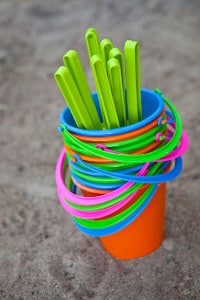
Next, here’s what to take: bring big, colourful objects that will be easily visible in the sand and can’t get damaged. For example, bring different coloured buckets, spades, and larger plastic toys. Small animals will be lost in the sand in no time unless you take great care. Use plasticized A4 colour flashcards.
Take something to create shade if it’s hot and a beach rug.
Bring plenty of water, sun cream, bathing suits, and an easy snack to keep kids going.
Include props for all your ‘at the beach vocabulary’ games, such as scarves for the scarf game.
Take my stories, laminated and A4 size, or whatever storybooks you want.
Use everything the beach has to offer as props in the games. For example, drawing on pebbles is a way to make vocabulary “flashcards” instead of cards. Likewise, shells, driftwood, buckets, spades, sand, and even the waves can all be part of the lesson.
At the beach vocabulary lesson plan
Teach new vocabulary
Start quietly with kids in a tight circle and use the first ten minutes to show them new vocabulary with some quiet listening games. (Get my preschool games book for these.) Integrate the beach into the lesson, whatever the theme
Since the beach holds an endless fascination, include it as part of the lesson, so children feel they are playing rather than in an English lesson.
Flashcards and buckets
Take the big colourful buckets and have kids place flashcards in them, “Coco, please put the flower in the red bucket.”
Three cups
Play the 3 cups game with the sand buckets, where kids guess which upturned bucket has an animal under it. Use a pebble or shell to be the animal.
Bury flashcards
Have kids dig a hole and then bury the object or flashcard that you name. Then let kids find a different item, dig it up, and name it.
Bury an item and have kids play hide and seek, find and name your object.
Flashcards and sandcastles
You may have wet sand to build castles. But if not, dry sand can still be fun. First, have kids make mounds of sand. Then they put a vocabulary item on each one. Finally, they hop over the mounds, naming the objects as they go.
Counting shells and telling stories
You may have shells and driftwood. Use these to make camps, and put toys inside. Then, count the shells and the toys, etc.
Have story characters live in the camps and enact the story there.
Teaching English at the beach
Once you have finished teaching at the beach vocabulary, use my resources to continue lessons. For example, take my first preschool story, I’m Hungry. In this story, various animals meet and greet each other. To play with greetings, make a meeting place by drawing a circle in the sand. Then, add an opening at each side that can be a gate for animals to come in and out. If your beach is dry sand and you can’t make a ring, use a scarf, a rope, a mat, or shells and driftwood. Finally, tell the story using this beach setting. It will seem more real for kids. When you tell the story again, have the kids mime the animals. Then, make a bigger greeting area and, instead of flashcards, have pupils be the animals.
To use my second story at the beach (Anna goes to the Zoo,) have kids collect beach items, like pebbles and shells, and count them. Draw animals on stones. Make piles of sand and count those. Count the towers on a sandcastle. Put animal flashcards into buckets, space them out between you and the sea and have kids run to the buckets and bring back an animal.
Movement
As the lesson continues, let children move about, miming, fetching things, and making things. For example:
- Bring them into a circle for a calm game such as “Freeze.” For this, sit them down and tell them to freeze every time you say an animal. Leave them freezing for a while, as this will calm them.
- Have them mime objects in the circle.
- Have kids draw vocabulary pictures in the sand.
Spelling
Have kids write their names in the sand with their fingers, shells, sticks, or pebbles if you are teaching reading and writing
Keep more boisterous games for the end
Stand in the water and throw a ball; the bigger, the better, so it is easy to catch. Ask a question, throw the ball, the child answers, and throws the ball back to you. Then, have kids pass the ball around the circle. When you clap, the one with the ball has to answer a question in English or do a silly forfeit like pretend to be a seagull.
Calming down
One trick to calm kids down quickly is to get everyone back in the circle for a drink or biscuit, but before that, it’s good to do a calming activity.
Take ten minutes to make an origami boat. Then, let kids float their boats on the sea or in the moat of your sandcastle. There are videos on YouTube on how to make an origami boat that floats.
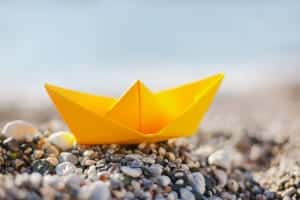
Ending the lesson and parents
Play vocabulary games in the sea, throwing a ball back and forth while repeating vocabulary. Of course, you might spend a long time in the water and play games there, but it depends on how long your lesson is, whether parents are collecting the kids at the end or whether you are taking them home.
If parents are showing up to collect their kids, then think about having something to show them. This could be castles, shell pictures, or vocabulary pebbles. Have kids tell their parents the new words and e-mail them a list of what you covered. Parents find it reassuring to think that their kids are learning something and not just playing on the beach.
Kind regards
Shelley Ann Vernon
Resources mentioned in this blog
My preschool games book is available in paperback or download. Click the picture to the right (or below if on mobile) for a DOWNLOAD from Shelley.
For paperbacks, please use this link:
Paperback from Amazon.
If you do not like Amazon, you can order from your local bookstore: ISBN-13: 978-1541133396.
-
Games
Preschool games book
Rated 0 out of 5€19.97Original price was: €19.97.€11.97Current price is: €11.97. Add to cart
Download version of the stories on sale in my shop.
10 stories, lesson plans, flashcards, and certificate of completion.
Paperbacks: This download pack of ten stories is covered Story Books One and Two from Amazon.
(Also available by order from your local bookstore: ISBN-13 Book 1: 978-1482012088 & Book 2: 978-1484052495,
-
Preschool
ESL Preschool Stories 1-10 Teaching Kit + PowerPoints
Rated 0 out of 5€39.97Original price was: €39.97.€29.33Current price is: €29.33. Add to cart
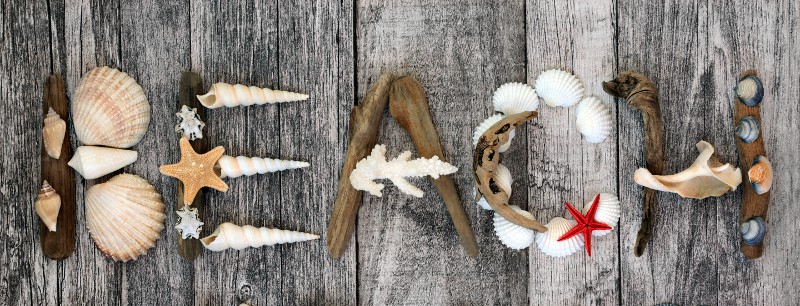
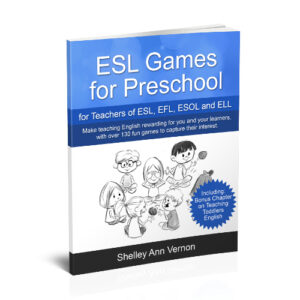
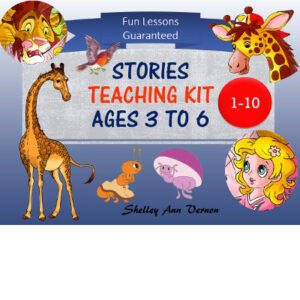
1 thought on “Teaching at the beach vocabulary”
Hello Shelley,
Thank you for your blog posts. I’m no longer teaching but your posts give my mind a needed shakeup about grammar and other aspects of English language!